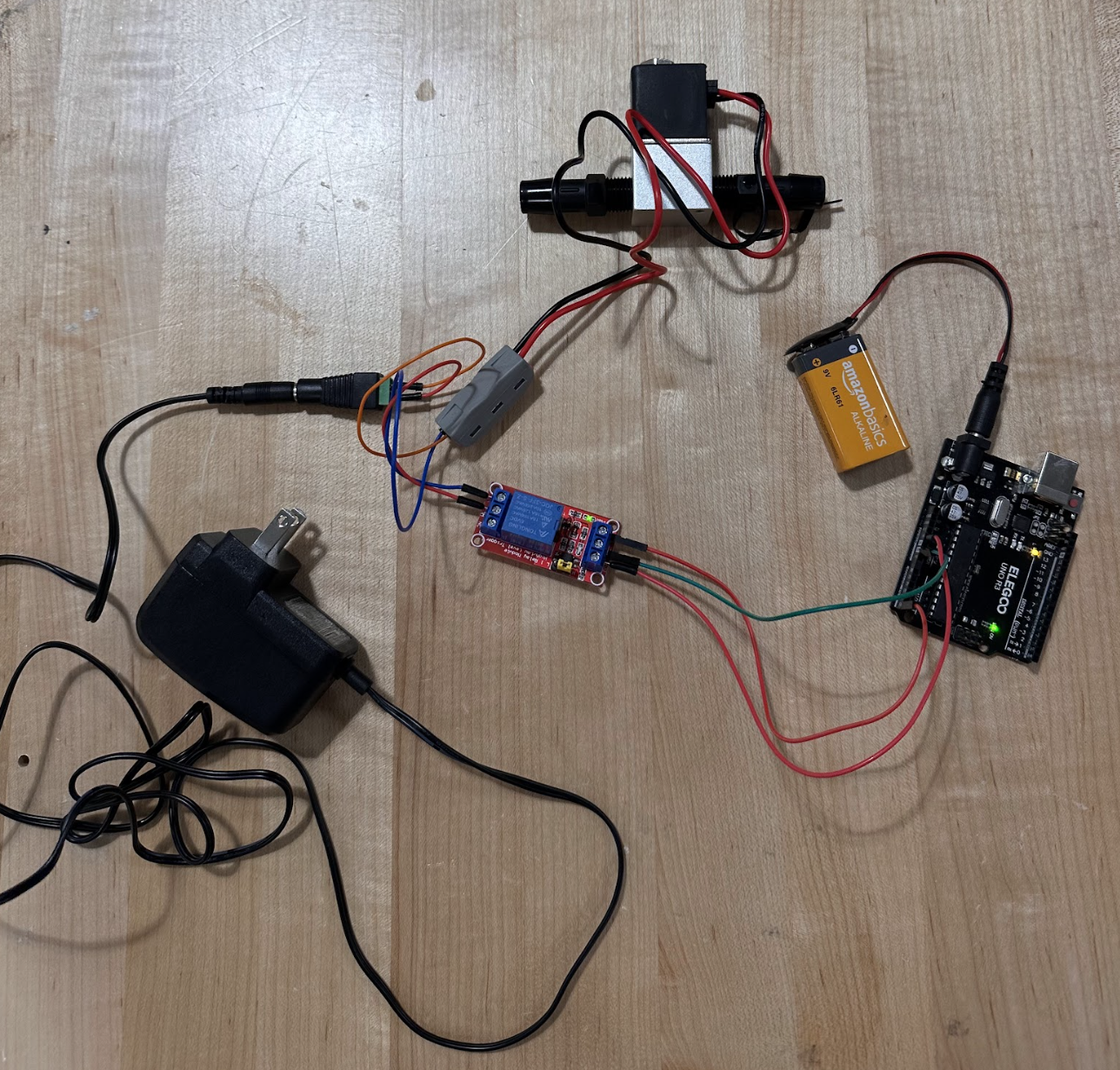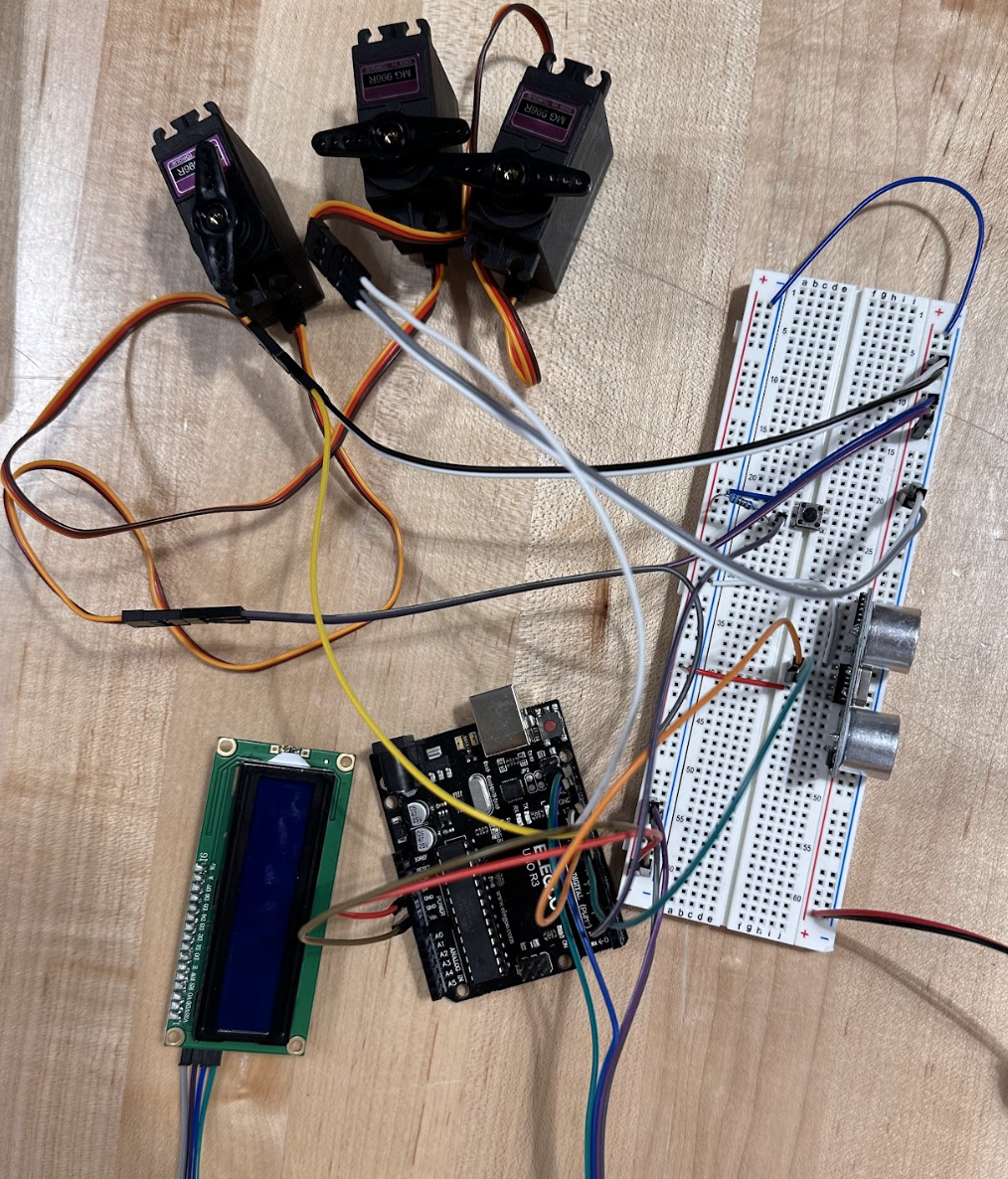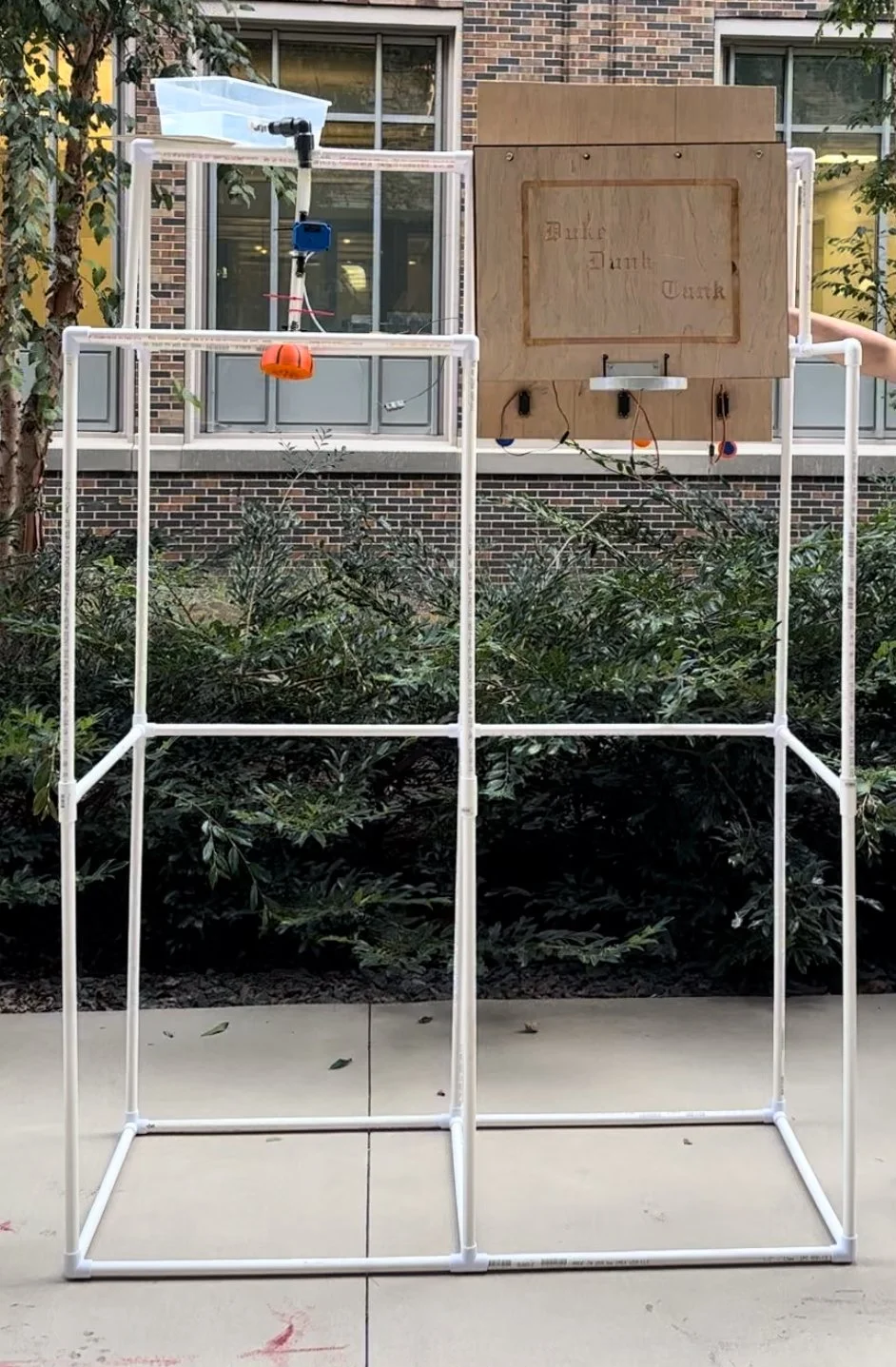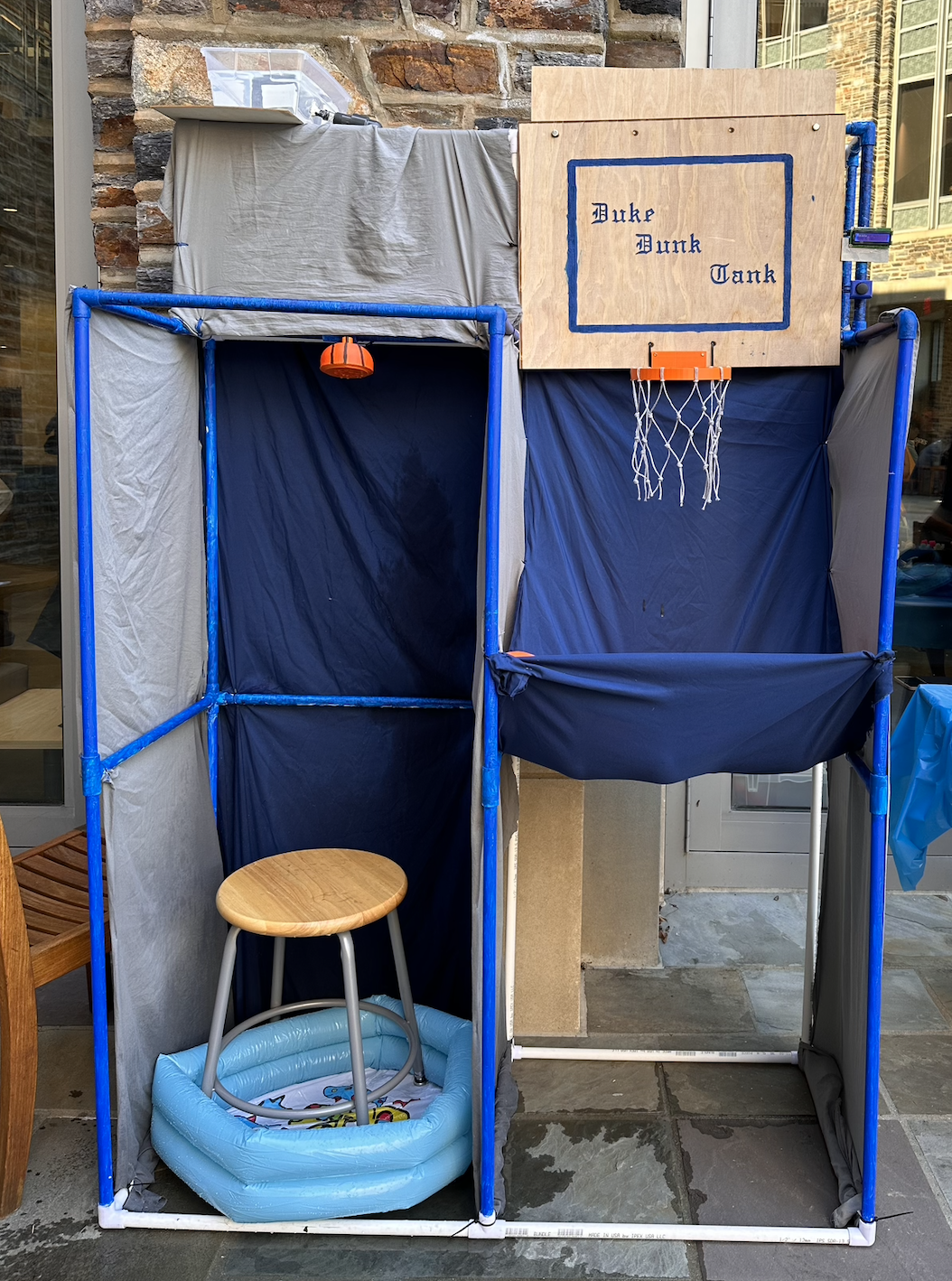Carnival Game
In the Mechanical Engineering Senior Design course, our team was tasked with designing a carnival game for children aged 6 to 10, within specific constraints for size and cost. We were given the creative freedom to prototype, design, build, and present a fun, kid-friendly game.
Drawing inspiration from Duke’s renowned basketball program, we developed the "Duke Dunk Tank," a basketball-themed game where participants had 60 seconds to make three baskets. Upon success, the game triggered a mechanism that "dunked" water onto a designated target, adding a playful and interactive element to the carnival experience.
PROJECT FEATURES
Teamwork
3D Printing
Testing
DESIGN GOALS
01 ENTERTAIN
Design of this project had to capture children's interest and encourage participation
02 ROBUST
Electrical and mechanical components had to withstand the impact from the basketballs being thrown ensuring durability and reliable performance throughout repeated use.
03 ACCURATE
Precise counting of each basket was essential for the proper functioning of the game’s timing mechanism
Electronics
Circuit design was crucial for the functionality of the carnival game.
On the right side, a servo motor, ultrasonic sensor, button, and LCD screen are connected to an Arduino Uno. When the button is pressed, the LCD screen initiates a 60-second countdown. Each time an object passes within 10 centimeters of the ultrasonic sensor’s range, the servo motor rotates 90 degrees, unveiling a Duke basketball player at the top of the board.
On the left side, a solenoid ball valve is connected to a separate power source, as we determined that a single 9V battery could not supply sufficient power to all electrical components in the system. The ball valve opens for five seconds to release water and then closes.
Framework
The physical structure of the game is designed to hold the water tank and basketball backboard. There is also space for the “victim” to sit and the ball return system.
A key design criterion was that the frame needed to fit within the designated area assigned to us at the carnival.
Integration
A major challenge and learning point with this project was integrating all components together.
The left image shows the final game setup, where cloth was draped over the PVC frame to conceal electrical components and create a cleaner appearance.
In the bottom-right image, the mounting of the servo motors onto the board is displayed.
As shown in the top-right image, custom 3D-printed members and bearing holders were used to translate the servo motor's motion into vertical movement.








